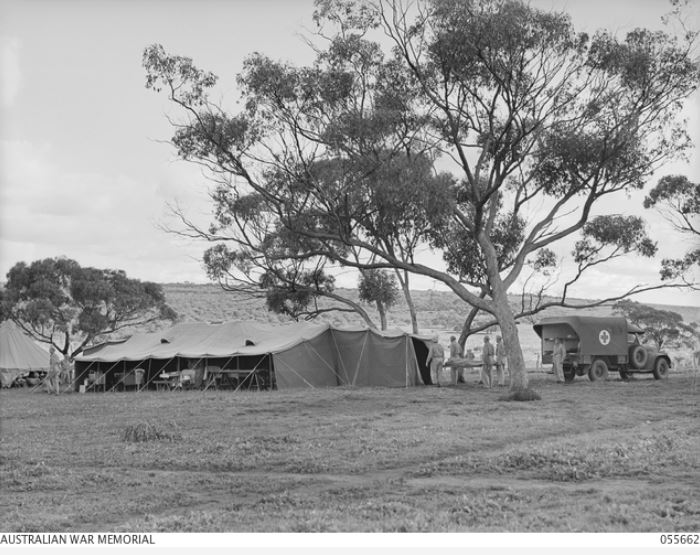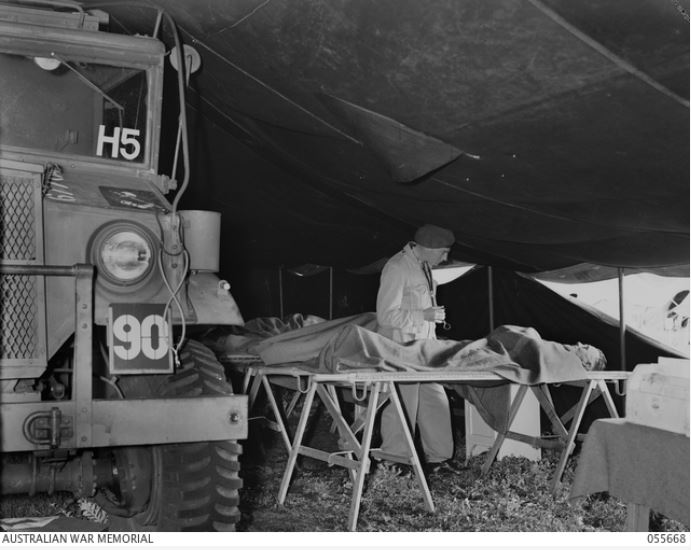Difference between revisions of "2/14th Australian Light Field Ambulance"
From Our Contribution
(→Patients) |
|||
| Line 22: | Line 22: | ||
* [[Norman Stanley Cosh]] 5 - 13 Feb 1943 | * [[Norman Stanley Cosh]] 5 - 13 Feb 1943 | ||
* [[Denys Brettell Duke]] 19 - 24 Feb 1943 | * [[Denys Brettell Duke]] 19 - 24 Feb 1943 | ||
| + | * [[William Francis James Elliott]] 29 Nov - 1 Dec 1943 | ||
* [[Wilfred Brettell Duke]] 27 Feb - 1 Mar 1944 | * [[Wilfred Brettell Duke]] 27 Feb - 1 Mar 1944 | ||
* [[ William John Lucas]] 25 - 27 Jun 1944 | * [[ William John Lucas]] 25 - 27 Jun 1944 | ||
Revision as of 18:19, 4 February 2023
Brief History
This unit was formed at Moore park, New South Wales in January 1942 to serve the 1st Armoured Brigade Group units. It moved to Greta late in the month, before moving again to Singleton in March and then in August to the Narrabri area while the Brigade was exercising. A re-organising of Armoured units saw the 2/14th Aust Light Field Ambulance move to Western Australia with the 1st Armoured Division, arriving in Mingenew in January 1943 with a detachment at Morowa. It moved around until the threat reduction was such that the HQ 1st Armoured Division was disbanded in September 1943 and the 2/14th Aust Light Field Ambulance moved to Walebing.
In January 1944 a detachment moved to Hope Valley near Fremantle, while the majority of the unit followed the 1st Armoured Brigade Group to Northam in June with a detachment left at Moora until August. By November 1944 the 1st Armoured Brigade Group had been disbanded, and the 2/14th Aust Light Field Ambulance moved to Ingleburn in New South Wales where they trained while waiting for a new role. In May 1945 they were re-organised as 2/14th Field Ambulance, and they were instructed to move to Lae in New Guinea, but the war ended before that move eventuated.
Patients
- Norman Stanley Cosh 5 - 13 Feb 1943
- Denys Brettell Duke 19 - 24 Feb 1943
- William Francis James Elliott 29 Nov - 1 Dec 1943
- Wilfred Brettell Duke 27 Feb - 1 Mar 1944
- William John Lucas 25 - 27 Jun 1944
Notes
Content has come from The Unit Guide - Volume 4 - The Australian Army 1939-1945, page 4.091 - Graham R McKenzie-Smith - Big Sky Publishing - 2018

